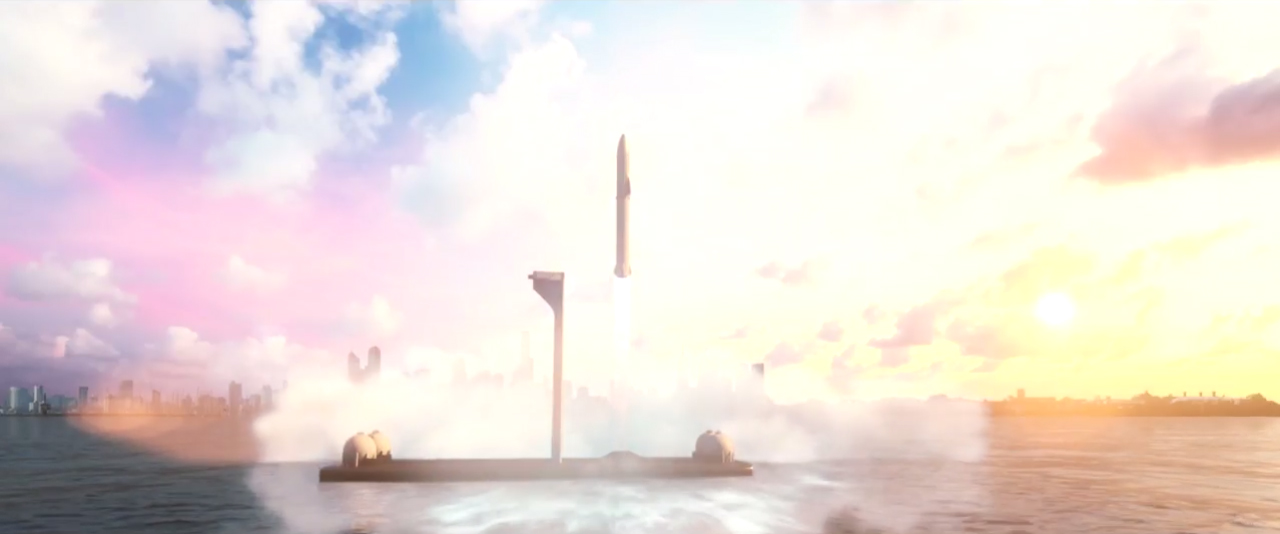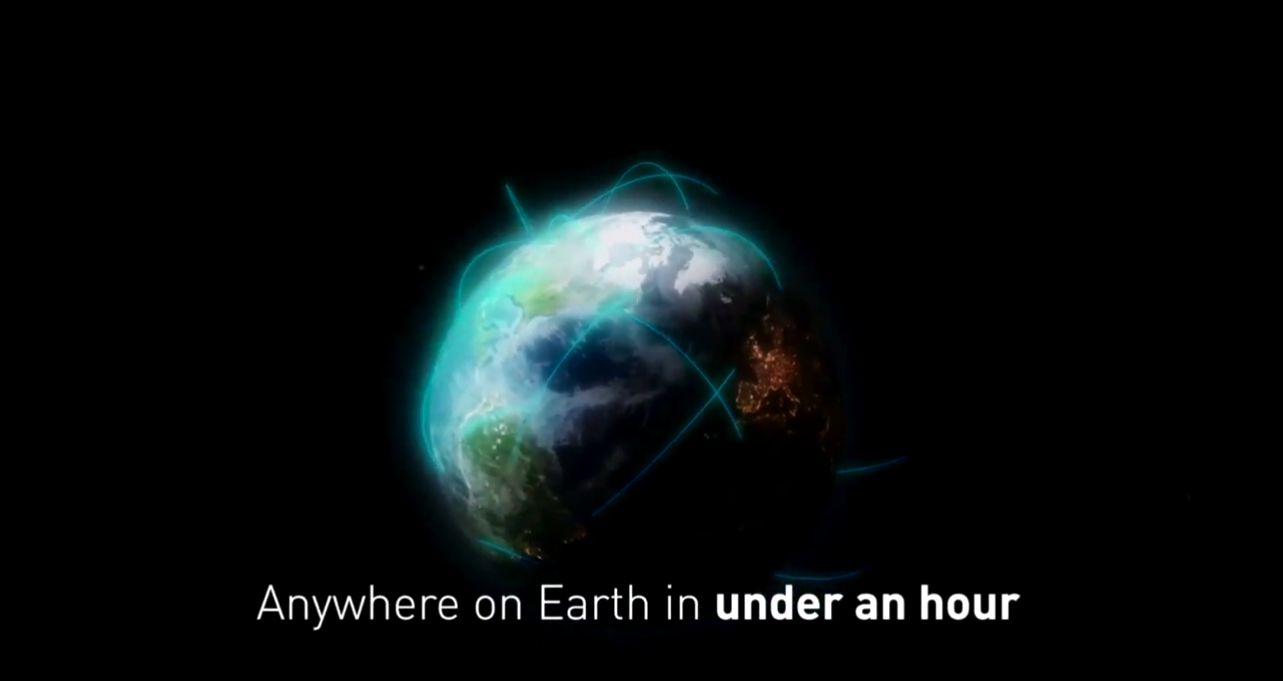Elon Musk Says SpaceX's Giant Mars Rocket Could Fly Passengers Around Earth
A giant spaceship designed to fly people to Mars could also revolutionize travel on Earth, SpaceX CEO Elon Musk announced today (Sept. 29).
SpaceX massive "BFR" spaceship, which could be ready to fly astronauts to Mars by 2024, could also be used to transport passengers to any destination on Earth in less than an hour, Musk told a huge crowd at the International Astronautical Congress 2017 in Adelaide, Australia today.
"If you build a ship that's capable of going to Mars, what if you take that same ship and go from one place to another on Earth?" Musk said. "So we looked at that, and the results are quite interesting." [SpaceX's BFR Mars Colony Ship in Pictures]
In a follow-up Instagram post, Musk said the cost of a rocket hop between cities would be relatively affordable. "Cost per seat should be about the same as full fare economy in an aircraft," Musk wrote. "Forgot to mention that."

Musk unveiled a dramatic video animation of a flight from New York City to Shanghai that began with passengers boarding a ferry to a floating launch platform. Once there, passengers entered the BFR spaceship and blasted off for Shanghai.
Total flight time by spaceship: 39 minutes at a speed of about 18,000 mph (27,000 km/h). A conventional NYC-to-Shanghai flight on an airplane is about 15 hours, according to TravelMath.com.
Get the Space.com Newsletter
Breaking space news, the latest updates on rocket launches, skywatching events and more!
"Most of what people consider to be long-distance trips would be completed in less than half an hour," Musk said.

In the video, the BFR's first-stage booster separates in orbit and returns to land at its launch site while the spaceship itself continues to Shanghai to land itself on platform where a crane is waiting to load it onto another booster for the return trip.
Musk did not elaborate on what the flight experience might be like for passengers. (Is there a snack service? In-flight entertainment? Weightless fun?) But he did say that he expected a smooth ride between launch and landing.
"The great thing about going to space is there's no friction," Musk said. "So once you're out of the atmosphere … it was smooth as silk. No turbulence, nothing. There's no weather. There's no atmosphere."
Musk first unveiled SpaceX's plans for the BFR spaceship (the letters stand for the codename Big F****ing Rocket) during the International Astronautical Congress 2016 meeting in Guadalajara, Mexico. The spacecraft is designed to be a fully reusable vehicle capable of carrying 100 people to Mars at a time, Musk said at the time.
During today's presentation, he provided new details on the spaceship and how it could be used to fly colonists to a future Mars city, or visit destinations closer to home like the moon (Musk envisioned a "Moon Base Alpha"), International Space Station or low-Earth orbit, where the ship could be used to deploy satellites and clean up space junk.
Musk said SpaceX is aiming to launch two cargo ships to Mars by 2022. By 2024, SpaceX hopes four ships would make the trip, with astronauts flying on two of those flights.
"And if we're building this thing to go to the moon and Mars, then why not go to other places as well?" Musk said.
Why not, indeed?
Editor's note: This story was updated at 3:22 p.m. EDT to include Musk's comments on the cost of a point-to-point BFR flight around Earth.
Email Tariq Malik at tmalik@space.com or follow him @tariqjmalik and Google+. Follow us @Spacedotcom, Facebook and Google+. Original article on Space.com.
Join our Space Forums to keep talking space on the latest missions, night sky and more! And if you have a news tip, correction or comment, let us know at: community@space.com.

Tariq is the Editor-in-Chief of Space.com and joined the team in 2001, first as an intern and staff writer, and later as an editor. He covers human spaceflight, exploration and space science, as well as skywatching and entertainment. He became Space.com's Managing Editor in 2009 and Editor-in-Chief in 2019. Before joining Space.com, Tariq was a staff reporter for The Los Angeles Times covering education and city beats in La Habra, Fullerton and Huntington Beach. In October 2022, Tariq received the Harry Kolcum Award for excellence in space reporting from the National Space Club Florida Committee. He is also an Eagle Scout (yes, he has the Space Exploration merit badge) and went to Space Camp four times as a kid and a fifth time as an adult. He has journalism degrees from the University of Southern California and New York University. You can find Tariq at Space.com and as the co-host to the This Week In Space podcast with space historian Rod Pyle on the TWiT network. To see his latest project, you can follow Tariq on Twitter @tariqjmalik.









